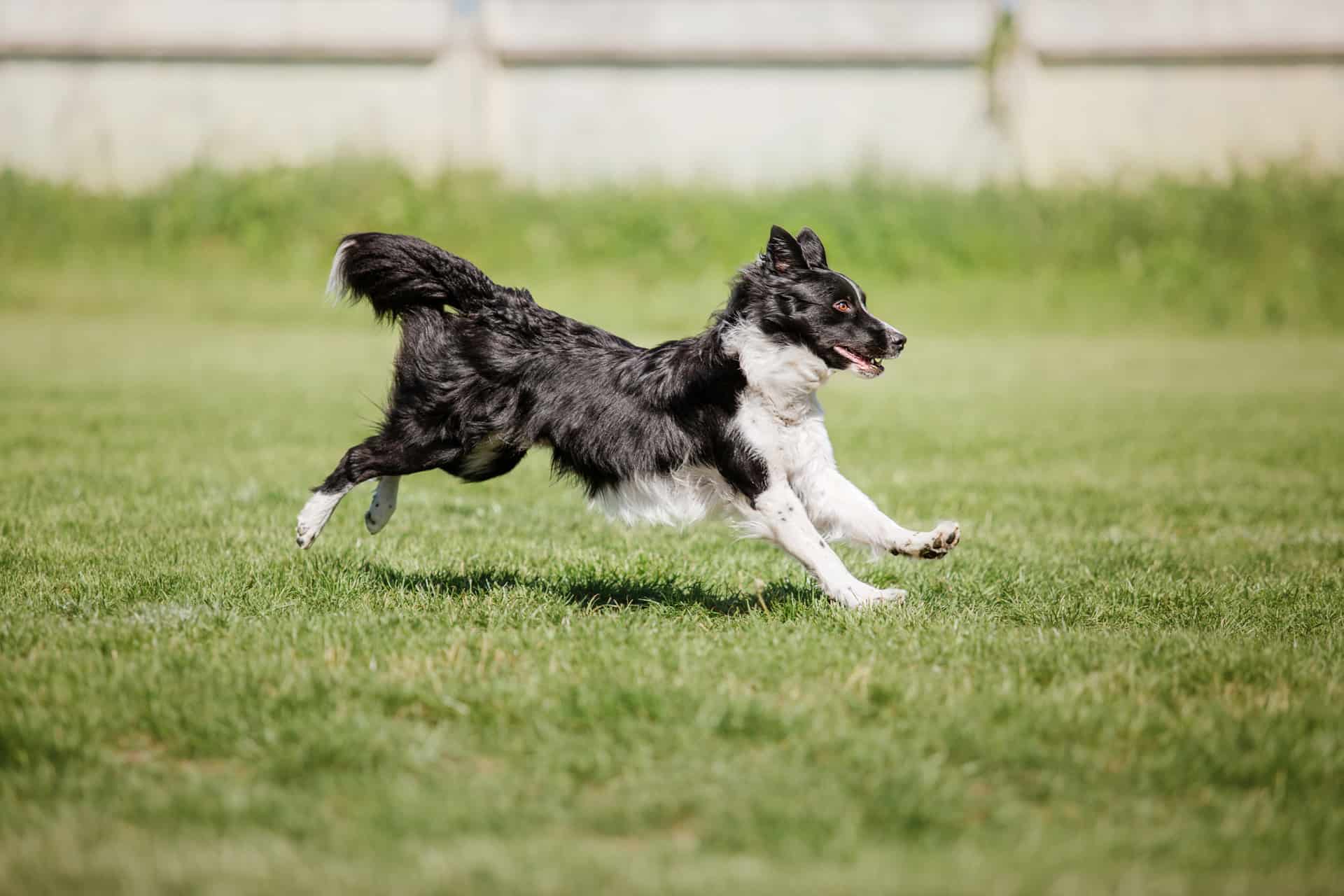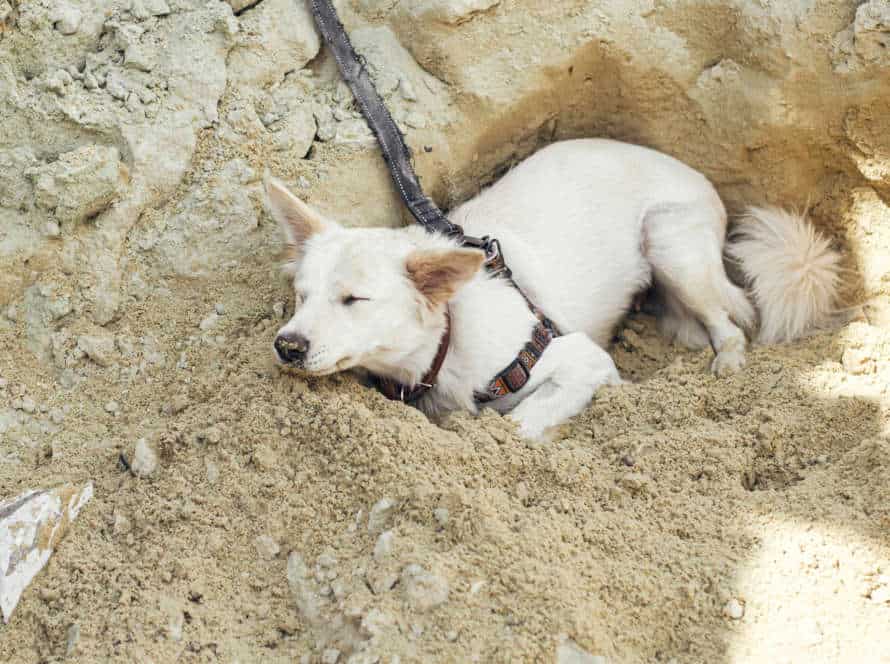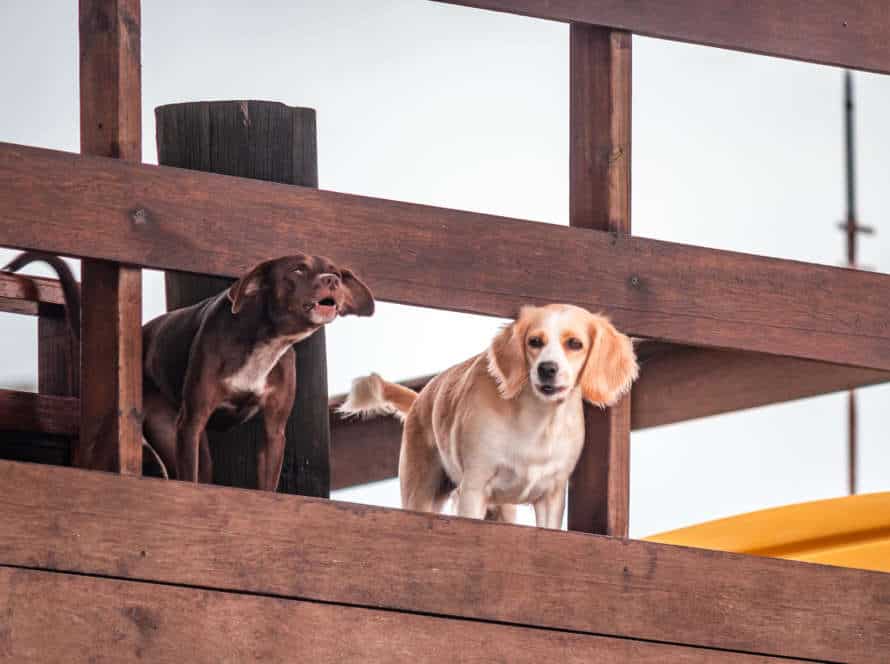Understanding Dominance and Jumping: Debunking the Myth
It’s a common myth that dogs jump on their owners to show dominance. But experts say this isn’t true! Dogs can jump for many reasons – like excitement, wanting attention or just because they learned it.
Here are a few tips to stop the jumping:
- Teach your pup an alternate behavior, like sitting.
- Reward good behaviors with treats and praise.
- Ignore your dog when they jump. Don’t give them any attention, even if it’s negative.
- Be consistent in your responses. Never use physical punishment or confrontation.
Remember, jumping is a natural thing for dogs. We must show them the right way. Pro tip: Consistency and positive reinforcement is key for training your pup!
The Concept of Canine Dominance
Canine dominance is a hot topic of chat and argument. People often misconceive what it means. This article seeks to look into the truth about dominance and how leaping and other actions are misconstrued. Let us begin. We will plunge into the concept of canine dominance.
Historical concept of canine dominance
The historical thought of canine dominance has been disproven by modern research. This notion suggested that dogs were pack creatures, looking to raise their own status in a group’s social ladder. This was suggested to be done through growling, snapping, and even biting.
However, current research indicates that dogs are not wolves, and their behavior is not based on pack dynamics. Dogs are social animals that require cooperation and communication, not aggression and power.
For instance, jumping is seen as a friendly greeting and an expression of joy, not an effort to dominate. Training with dominance theory or punishment can actually harm the bond between you and your dog.
To teach your pup correctly, focus on positive reinforcement and humane, science-based training techniques. The goal should be to form a trusting and respectful bond with your dog, not to dominate or control him.
Modern research on canine behavior
For decades, the idea of canine dominance was widely believed to explain dog behavior. However, recent research has debunked this myth. Dogs don’t necessarily aim to be dominant over their owners or other dogs. They don’t have a hierarchical pack structure either.
Instead, modern research suggests that dogs behave based on individual experiences, motivations and learning history. This means punishment or domination techniques to train dogs are outdated and harmful. Positive reinforcement and understanding each dog’s unique behavior is more effective.
In terms of jumping, it’s important to understand that dogs jump up as a natural greeting or to get attention. Not to exert dominance. Consistent training and redirection techniques can stop this behavior without dominance techniques or punishment.
Modern research shows moving away from outdated ideas and embracing individual and positive approaches is key.
Misconceptions about dominance in dogs
The concept of dog dominance has been widely discussed, but often misunderstood. We need to tackle misconceptions about it, to better understand our pet’s behavior.
It is not true that all dogs have the inclination to dominate their owner. Each canine is unique in its personality, and their behavior is determined by various factors like temperament, training, and socialization.
People assume that when a dog jumps on them, it is an act of dominance. But this isn’t always the case. Jumping may be due to excitement or lack of training, rather than dominance.
Dominance is not a personality trait, but a behavior that alters per situation. Dogs may act dominantly in certain scenarios, such as resource guarding or playing rough. But this does not mean they are dominant all the time. It is best to consult a professional dog trainer to accurately comprehend and modify any behavior issues.
The Myth of Alpha/Dominance Theory
Alpha/Dominance theory has been around for years when it comes to animals. But is it accurate to apply it to canine behavior such as dominance and jumping? Recent research has proven many of the assumptions wrong. These assumptions are false when trying to understand animal behavior.
What is the myth of alpha/dominance theory and how does it affect canine behavior? Let’s figure it out.
The origins of alpha/dominance theory
Rudolph Schenkel, an animal behaviorist, proposed Alpha/Dominance theory in the 1940s. He observed captive wolves and thought they formed linear social hierarchies. The alpha or dominant wolf competed for dominance. Later studies debunked this theory. Wolves form family units that cooperate and collaborate to survive.
The Alpha/Dominance theory was applied to dog behavior. People thought dogs wanted to dominate their owners. In reality, dogs don’t operate on a linear dominance hierarchy. Positive reinforcement training methods work better. They promote mutual respect and cooperation, not dominance and submission.
By understanding Alpha/Dominance theory and debunking the myth, we can build better relationships with animals.
Flaws in the alpha/dominance theory
The alpha/dominance theory, which says dogs should be physically dominated to become the alpha of their human family, is a widely-circulated myth. Many people believe in this theory, but it has several flaws. These include:
- Old research on captive wolves, not accurately reflecting domesticated dogs’ behavior.
- Encouraging physical force and punishment, which can harm the dog and damage the owner-dog relationship.
- Increasing the dog’s aggression and anxiety instead of curbing it.
- Assuming all unwanted behavior is due to dominance, ignoring other possible causes.
The alpha/dominance theory is flawed and outdated. A kind, positive approach to training is much better and more humane.
The consequences of relying on dominance theory
Dominance theory as a dog training philosophy can be damaging for both the dog and the owner.
This “alpha dog” idea has been disproved by modern dog trainers and animal behaviorists. Reasons include:
- It can make the dog anxious.
- It can cause physical pain and injury.
- It does not take into account the individual learning style of the dog.
Instead of dominance theory, positive reinforcement and science-based training methods should be used.
Tip: Your dog’s behavior is not about dominating you, but a reaction to their environment and past experiences.
The Science of Dog Behavior
Having a pup? Essential to understand their behavior! It can help build a strong bond, keep them secure and emotionally stable. This article takes a look at the science behind dominance and jumping. We’ll explore why dogs exhibit these behaviors, plus training tips. Let’s go!
Understanding dog’s communication signals
As a pup parent, it’s important to decipher your furry friend’s communication signals. Dogs use various body language and vocalizations to show their emotions, wants and needs.
Wagging the tail can mean excitement or nervousness – look out for other cues to know their mood! Barking can mean alertness, aggression or fear, and growling usually comes before a bite. Licking is a sign of comfort and affection.
Remember, dogs don’t communicate through dominance – jumping is not a sign of them trying to be in charge. Steer away from aversive training and use positive reinforcement for a loving relationship with your pup! Pro tip: Closely observe their body language and vocalizations to understand them better and avoid misunderstandings.
Positive reinforcement training techniques to address jumping behavior
Positive reinforcement techniques are great for dealing with jumping behavior in dogs. Old-fashioned dominance techniques, like punishing a pup or yelling at them, don’t work – science says so! Instead, try positive reinforcement:
- Turn away from the pup and ignore them when they jump.
- Give treats or praise when they greet you calmly.
- Train them to sit/stay when greeting you or others.
These techniques reward good behavior and avoid negative interactions that can worsen bad behavior. Pro tip: Positive reinforcement training needs consistency – make sure everyone in your home follows the same technique for the best results.
Building a strong bond with your dog
Creating a strong connection with your canine companion involves knowing their behaviour and not buying into the myth of dominance and jumping.
Firstly, dogs don’t think in terms of dominance. Acting like a pack leader may lead to nastiness and fearfulness. Instead, use positive reinforcement training – rewards, compliments and play – to motivate good behaviour.
Secondly, when dogs jump on people it is natural. You can teach them not to do this by ignoring them and rewarding calm behaviour. It’s important to understand your dog’s behaviour and give them activities like socializing and exercise.
Building a solid relationship with your pup takes patience, constancy and understanding of their individual traits. By taking a positive attitude and tending to the relationship, you can build a strong base of love, faith and respect.
Training Strategies to Address Jumping Behavior
Training is essential for managing jumping behavior. It is often thought that dominance methods are needed to reduce jumping. But this is a misconception! Dominance tactics are not needed to decrease jumping and there are many other training tactics that can help. Let’s look at these approaches and how they can be useful.
Redirecting jumping behavior
Jumping is a common dog problem. Here are 3 strategies to help:
- Ignore their jumps – Don’t give them attention for it. No attention means no motivation.
- Teach them to sit – Train them to sit before they jump. Reward their good behavior.
- Use positive reinforcement – Treats, praise, and affection encourage good behavior.
Fact: Jumping is usually due to wanting attention. Training can help redirect the behavior.
Teaching polite greeting manners
Teaching politeness to your pup is key when it comes to training. It helps to prevent jumping when they meet people or other animals. Here are some tips:
- Start by teaching ‘sit’ and ‘stay’ commands.
- Reward good behaviour with praise and treats.
- Keep them on a leash and reward when they don’t jump.
- When someone approaches, have them sit and stay.
- Never punish for jumping, it only makes it worse.
By following these strategies you can teach your pup to be polite and avoid unwanted jumping.
Consistent training to reinforce acceptable behavior
To tackle jumping in dogs, consistent training is key. Dominance-based techniques, like pinning and rolling, can actually make the behavior worse and result in aggression. Positive reinforcement methods are much better. Try these tips:
- Reward calm and controlled behavior with treats, toys and praise.
- Teach an alternative action, such as sitting or greeting with all four paws on the ground.
- Be consistent and don’t reward jumping by giving attention – even negative attention.
- If things get too hard, seek help from a professional dog trainer.
Remember that dogs learn best with positive reinforcement and consistency. Use this to address jumping in your furry pal!
Conclusion
To sum up, the belief that dominance and jumping are connected is untrue. Being dominant is not an absolute requirement for successful jumping. We have established that skill, strength, and technique are the main elements for successful jumping. Therefore, we should focus our efforts on making sure proper technique and strength are employed, instead of attempting to dominate the horse.
Understanding your dog’s needs
Going beyond food, shelter, and exercise, knowing your dog’s needs is key. Dog jumping is usually seen, but it is not a sign of dominance or lack of training. Dogs jump to greet you or to get affection. Redirect this behavior with positive reinforcement.
Punishing your pup can damage their trust and make the problem worse.
Remember: Patience and understanding your four-legged pal’s behavior and personality are key! If you’re having trouble meeting their needs, ask a pro trainer or vet.
Avoiding overly dominant behavior
Pet owners can think dominance is a must to train their pup, causing them to be too dominant. Yet, professionals believe this theory is wrong and not good for the pet-owner relationship. Here are some ideas to stay away from too much dominance:
- Use positive reinforcement to inspire your dog.
- Praise, treats, and fun activities can make training calmer.
- Take your pup for daily walks, play, and petting.
- Create boundaries with verbal and body cues.
A well-trained pup respects and listens from love, not fear. Tip: Don’t focus on dominance and rather create a positive atmosphere for your pup to grow.
Achieving a harmonious relationship with your dog
Debunk the myth of dominance and jumping with your pup. Dominance-based theories have been debunked. Positive reinforcement training is much better for creating a strong bond.
Jumping is not a sign of dominance, but an instinctive behavior. Train your dog to greet people calmly, and discourage jumping.
Set clear boundaries and routine for your pup. Dogs need predictability, rules, and positive interactions. Reinforce good behavior and redirect bad behavior without punishing.
Be mindful of their emotions, acknowledge their communication signals, and provide them love and care. That’s how you achieve a harmonious relationship!
Frequently Asked Questions
1. Is it true that my dog is trying to dominate me when he jumps on me?
No, jumping behavior is not a clear indication of dominance. Dogs jump for several reasons such as excitement, attention-seeking or greeting. It’s important to teach your dog better alternatives to jumping, like sitting, to eliminate this unwanted behavior.
2. How can I stop my dog from jumping on me and others?
The key is to teach your dog alternative ways to greet people. You can train your dog to sit or lie down for greetings and reward him when he follows through. It’s also important to ignore him when he jumps as this reduces his motivation to continue the behavior.
3. Can dominance-based training methods help stop jumping behavior?
No, dominance-based training methods may seem effective in the short term but can cause long-term harm. Punishing or using force can lead to anxiety and aggression in dogs. Positive reinforcement-based training methods are effective alternative solutions.
4. What are the dangers of using dominance-based training methods?
The dangers include increased aggression, fear and anxiety in dogs, which can lead to several other behavioral problems. The focus on hierarchy can also create a negative impact on the human-dog bond and cause problems in communication.
5. What are the benefits of positive reinforcement-based training methods?
Positive reinforcement-based training methods are effective in improving a dog’s behavior in the long term. It increases a dog’s motivation, confidence and trust in his owner, creating a positive impact on the human-dog bond. It also helps in reducing stress and anxiety in dogs.
6. How long does it take to stop a dog from jumping using positive reinforcement-based training methods?
The duration of the training depends on the age, breed and temperament of your dog. With consistent and positive training sessions, most dogs can learn alternative ways to greet and stop jumping within a few weeks.







